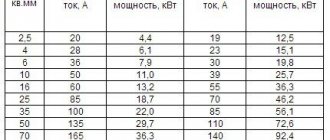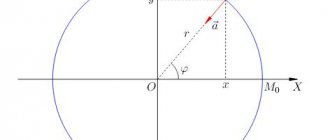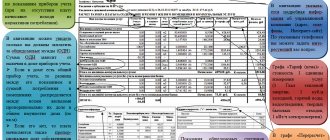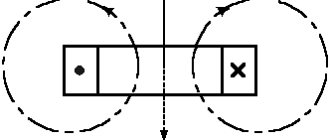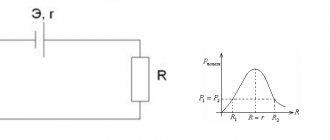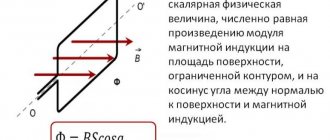Electricity calculation method
Once a month it is necessary to take meter readings.
The electricity meter calculates the electricity consumed in kW/h (kilowatt per hour).
Depending on the service that provides electricity services, you need to give the recorded readings to a staff employee or personally calculate the electricity consumption on the meter for the last month, as well as the payment amount.
This is very easy to do, especially since in certain models of electricity meters the required values are highlighted in a certain color.
This is interesting! Single-phase electricity meter Mercury: model description, characteristics and tips for use
Please note some of our recommendations on how to transmit data and electricity meter readings.
There are the following notification methods for electricity consumption:
- Report the readings in person to the office of the consumer service provider or energy supply organization.
- Use the functions of remote data transfer via the Internet, if possible.
- Dictate over the phone.
- Include the readings in the appropriate box when paying the receipt.
How are electricity charges calculated based on the standard?
Electricity consumption standards are needed to calculate the payment for consumed electricity per month.
If the apartment does not have an electric meter, the payment is calculated on the basis of Government Decree No. 614 of July 22, 2013, paragraph 33.
The calculation is performed using the formula:
P = L * N * T, where:
P – final payment amount;
L – number of people living in an apartment or house;
N – regional standard per person;
T – cost of 1 kW/hour of electricity, according to the tariff plan.
A multiplying factor is applied to the result obtained. It is specified in the energy sales department or the resolution of the local administration. As a rule, it is equal to 1.5.
You can download Decree of the Government of the Russian Federation of July 22, 2013 N 614 here.
If the housing is in disrepair, dilapidated, or there is no technical possibility of installing a metering device, the increasing factor is not applied. Then the tenant must present an inspection report indicating the technical impossibility of installing a meter in a given room or apartment.
If the meter fails, the first three months of electricity are paid according to the average. To do this, take the electricity consumption for the last six months and calculate the average consumption for the month. If after three months the owner has not replaced the device, then starting from the fourth month, payment will be charged according to the standard.
At the same time, Energosbyt has been issuing invoices for three months without a multiplying factor. Starting from the fourth month, an increasing coefficient is applied.
In addition, owners of apartment buildings are required to pay expenses for general house needs. To do this, the apartment building must be equipped with a common house electricity meter. The calculation is made depending on the area of the apartment.
How to take meter readings correctly?
Electronic meter “Mercury 201.5”
The meter display shows data on the electricity used for the entire time.
Write down these numbers, down to the decimal point. All that comes after it are decimal parts, which change quickly and do not need to be taken into account.
The values of the previous period must be subtracted from the recorded reading. Thus, you get the electricity consumption for a real period of time in kilowatts per hour.
Now you need to multiply the resulting number by the index, which is the tariff for 1 kW/h (this coefficient can be found in previous receipts or checked with the company that provides electricity to your home). The resulting figure is your next payment for electricity.
Good to know: some apartment owners install two-phase electricity meters, which bring a lot of benefits to their owners, since the tariff is lower at night.
Day-night meters are capable of correctly counting electricity consumption separately for daytime and nighttime. According to the instructions described earlier, calculate two values - electricity consumption over the past period at night and during the day. Multiply each resulting value by the corresponding index and add these numbers.
General house needs
Residents of one-room apartment building also pay for the light in the elevator
- this is the difference between the readings of a common building electricity meter and the sum of the readings of individual metering devices of all residential and non-residential premises in an apartment building.
This includes energy costs for the following administrative parts of a residential building:
- dressing rooms, platforms and staircases, attics, roofs, elevators and elevator shafts, built-in parking lots, workshops, various technical rooms in which engineering structures are located, as well as wheelchair spaces;
- other structures that are intended for the maintenance and use of apartment buildings, including transformer substations and heating points;
- sports and children's playgrounds, which are located within the boundaries of the land plot of a multi-storey residential building.
That is, all energy consumption is taken into account, which goes towards the comfortable use and improvement of the home.
The larger the apartment, the higher the fee for one room.
In order to encourage apartment residents to use energy resources economically, the Russian Federation established a tax on electricity consumed for general household needs.
Law No. 307 “On the procedure for providing utility services to citizens” came into force in the spring of 2006, and energy companies received the right to add to payment documents the amount for energy used in non-residential premises.
At first, the calculation of expenses for one-way services was carried out exactly according to the standards. The amounts charged for the use of energy resources were meager.
This is interesting! Who should change the electricity meter and at whose expense: we understand the nuances
But after the approval of Resolution No. 344 “On Amendments to Certain Acts on the Provision of Public Utilities” by the Russian leadership in 2013, the fee is calculated in proportion to the square footage of the owner’s living space. The payment amount depends on whether there is a common house registration meter.
Take note: in order to correctly calculate the ODN readings for electricity, you need to study the formulas that are approved by the authorities and required for use.
How is ODN calculated?
Everyone has the right to know what they pay for.
For a sample, we will introduce an indicator that will mean a part of one apartment from the total area of the building.
Example formula:
KOP = PKV / PD
- KOP – payment coefficient;
- PKV – square footage of this apartment;
- PD – area of the house.
For example, the total area of the house is 1900 m2, and part of a particular apartment is 80 m2, which means the indicator will be equal to 0.042.
What to do if there is no communal meter?
The owner of the apartment has a choice - to assign the responsibility for calculating electricity consumption according to the meter to the building management employees or to enter into an agreement to pay for the electricity supply with the company that provides energy sales.
Government Order No. 307 dated May 23, 2006 states that institutions providing energy supply are required to receive payment for services provided no more than the stated norms in the region. Electricity calculations are carried out in the same way as in houses that do not have an electricity meter:
PEL = IEL x PNL x COP
- PEL – electricity consumed per month;
- IEL – ODN index per 1 m2;
- PNZh – total area of common areas.
Let's take as an example the same house with an area of 1900 m2, in which non-residential premises are 400 m2. With an indexation of ODN equal to 1.25 kW, the indicator of electricity consumed per month is: PEL = 1.25 x 400 x 0.042, that is, 21 kW.
Calculation of readings with an installed meter
If you have entrusted the readings of electricity consumption to the company that provides electricity, then when calculating them, the difference between the total house consumption of all dwellings and energy according to the standards in premises that do not have a meter is taken.
We use our conditional apartment with an area of 80 m2 for an example calculation:
OEL =(OOD-OKV)/KOP
- OEL – parameter of electricity consumed in a certain apartment;
- OOD – total electrical energy of the entire multi-apartment building;
- OKV - the total expense of the owner or tenant of the home.
If according to the general building meter of a given house, 12,500 kW was consumed, and the amount of electricity used by all residential premises is 11,930 kW, then the OEL of our apartment will be 27 kW.
Important: you need to constantly regulate the electricity calculations at the one-way distribution point, and also send readings to the service company every month so that there are no incorrect calculations and overpayments.
If the ODN calculation has not been sent for a certain apartment for a long period of time, then the average amount of consumption for one month is taken into account.
The balance of used and unpaid electricity is divided among residents in proportion to the electricity consumption in each apartment.
If you have an old-style electricity meter (disk type), you can calculate the energy consumption of all electrical appliances currently running using a spinning disk.
To do this, you need to calculate the number of full revolutions of the disk (the beginning of each subsequent circle is indicated by a black mark) in 1 minute.
Let's assume this figure is 25. We multiply the resulting value by 60 (the number of seconds in a minute), thereby obtaining 1500. One kW of energy is equal to 1200 revolutions. Therefore, the energy consumption of all electrical appliances currently operating in your apartment will be: 1200 / 1500 = 0.8 kW.
You may also be interested in information on how to pay utility bills online.
You can find out how to calculate water charges based on meter readings here.
Which household appliances consume the most electricity?
This article will help you understand how much electricity household electrical appliances can consume. The article shows the average power values for each device.
Computer.
By and large, if we count roughly and approximately, everything depends on the power of the power supply and the specific work that the computer is currently performing. With the declared power of the unit ranging from 350 to 550 Watts, it is unlikely to consume all of it even at full load. You can also add a monitor here - from 60 to 100 watts. Thus, the average 450 Watt power supply and 100 Watt monitor consume 550 Watts or 0.55 kW of electricity per hour. Again, these figures are greatly overestimated. For an approximate calculation, you can take almost the maximum value – 0.5 kW/h – we won’t be mistaken. When using a computer 4 hours a day, we get 60 kW/h per month. Accordingly, when used 8 hours a day - 120 kW/h, and so on.
Fridge.
The energy consumption of refrigerators is calculated over 365 days for a 220V/50Hz network. Designed for 100 liters of useful volume per day, it allows you to compare refrigerators of different sizes. Again, the amount of power consumed depends on the volume of the refrigerator and the amount of food stored in it. External conditions also leave their mark, changing depending on the time of year. The technical data sheet for the refrigerator indicates the energy consumption per year. In most cases, this figure ranges from 230 to 450 kW/h. By simple calculations, dividing this figure by 12 months, we get from 20 to 40 kW/h. Again, this number only applies under ideal conditions. In reality, it is unlikely that this value will be achieved.
TV.
TVs are different. A modern cathode ray tube TV consumes from 60 to 100 W/h. On average, for calculation, we will take 100 W/h. When watching TV 5 hours a day – 0.5 kW/h. Per month – 15 kW/h. LCD TVs with a fairly large diagonal consume about 200-250 W per hour. The set brightness plays an important role in this matter. Accordingly, the number of kilowatt-hours spent per month can be safely multiplied by 1.5. It turns out from 20 to 35 kW/h. Small LCD TVs consume about the same amount as CRT TVs, or a little less: from 50 to 80 Wh - 8-12 kWh per month. Large plasma TVs consume from 300 to 500 watts per hour. If you have several different TVs, add up the values.
Washing machine.
The power consumed by a washing machine is not constant and depends on the washing mode, the weight of the laundry and the type of material. On average, the declared power of most washing machines is from 2 to 2.5 kW/h. However, rare cars consume such an amount of energy. For calculations, you can take from 1 to 1.5 kW/h. When washing 3 times a week for 2 hours, we get from 24 to 36 kW/h per month.
Kettle and iron.
The real monsters of consumption in the apartment are the kettle and the iron. Working for a minimum amount of time, they consume almost as much electricity as some appliances that work all month long. With a kettle power of 1.5 to 2.5 kW/h, using it 4 times a day for 5 minutes, we get from 20 to 25 kW/h per month. It's almost the same story with the iron. Its power is approximately the same as that of a kettle, and if you iron 3 times a week for 1 hour, you get 25 - 30 kW/h per month.
These are just the most famous consumers of electricity in your apartment. But there are also microwave ovens, vacuum cleaners, dishwashers, chargers for mobile phones and laptops. Not to mention incandescent lamps, which, depending on their number, power and burning time, can take on from 50 to 100 kW/h of electricity consumed per month.
As a result, by simple addition, we get an approximate consumption of 200 to 300 kW/h per month. Again, excluding the electric stove. How much electricity do you consume?



